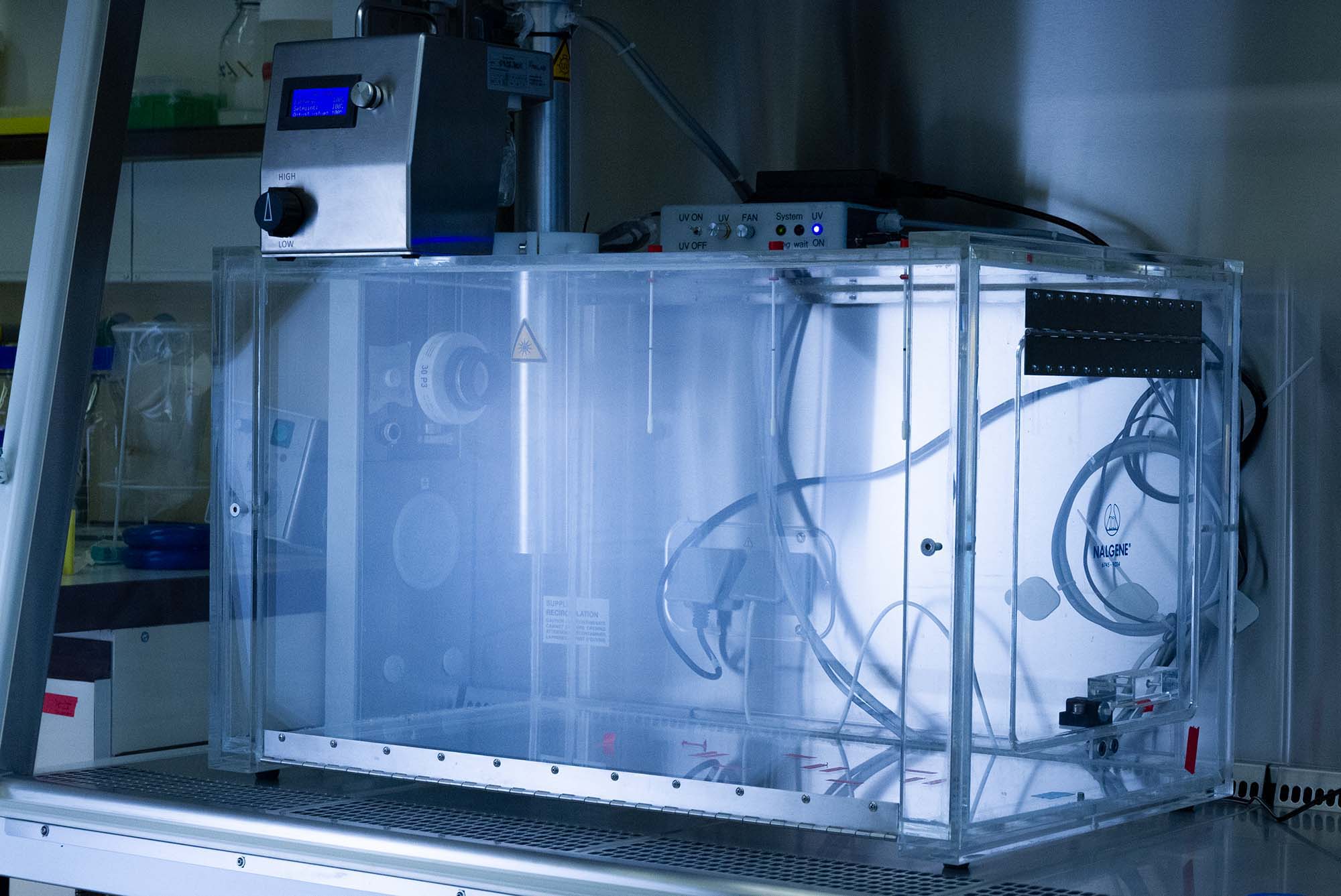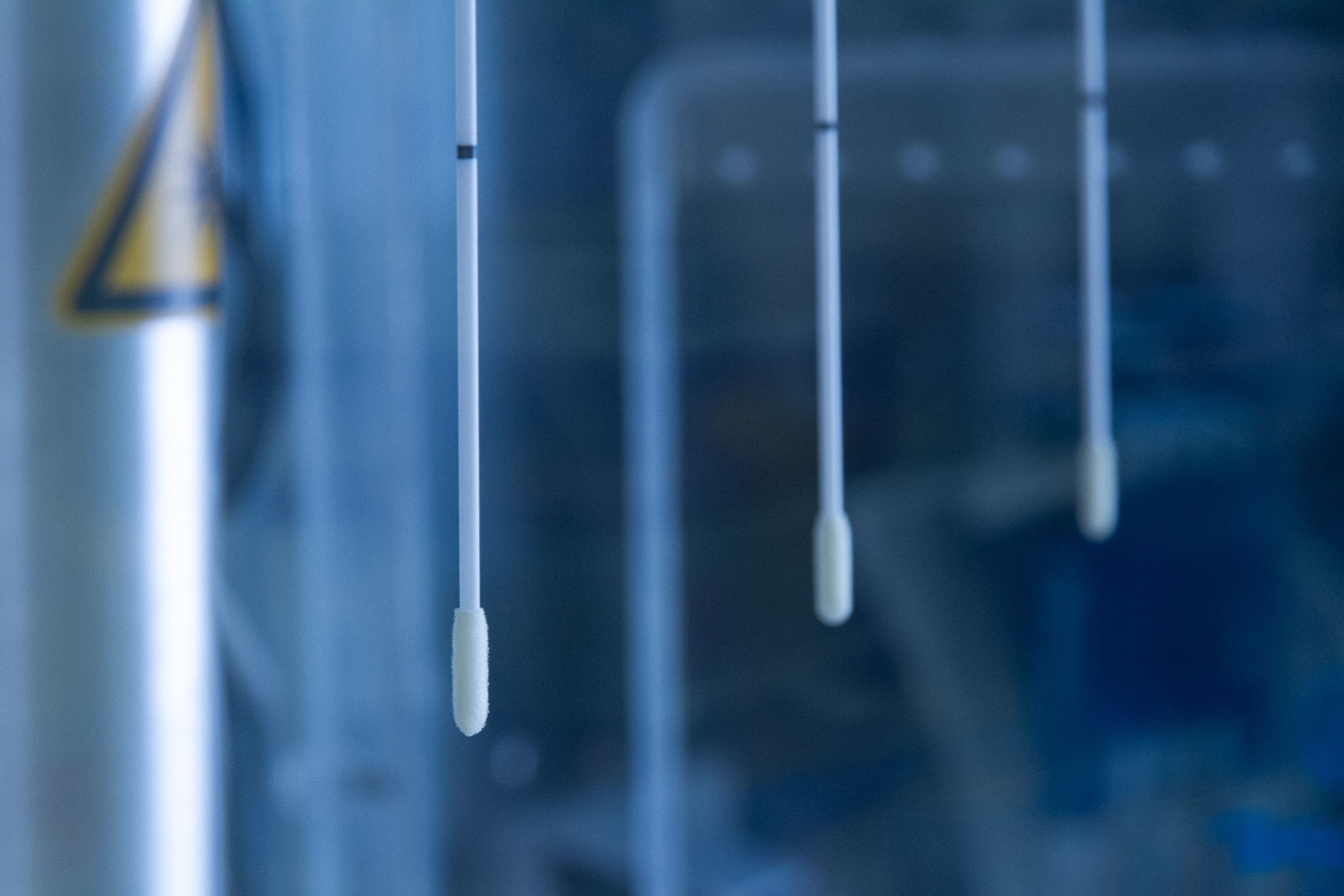Challenge: Workflow for investigating aerosol-borne viruses
The SARS-CoV-2 pandemic revealed large gaps in the knowledge of aerosol-borne viruses, raising fundamental questions regarding their spread in enclosed rooms, the preventive measures of protective masks up to air filters and the efficiency of inactivation processes of air purifiers. The innovation field of Virus-based Technologies has established a comprehensive and adaptable workflow to address these questions.
 Fraunhofer Institute for Interfacial Engineering and Biotechnology IGB
Fraunhofer Institute for Interfacial Engineering and Biotechnology IGB
